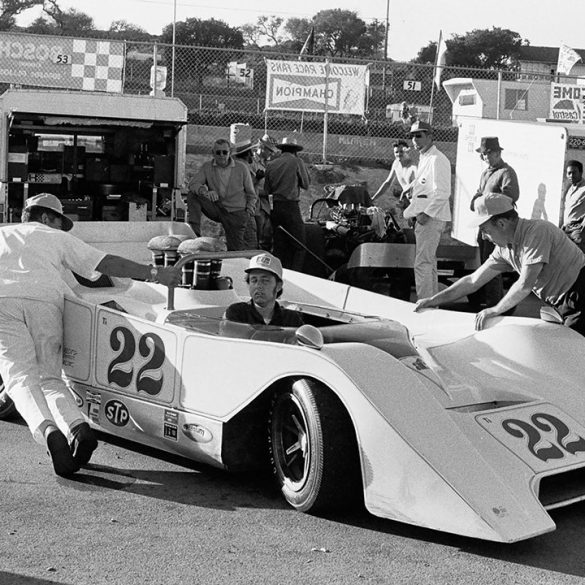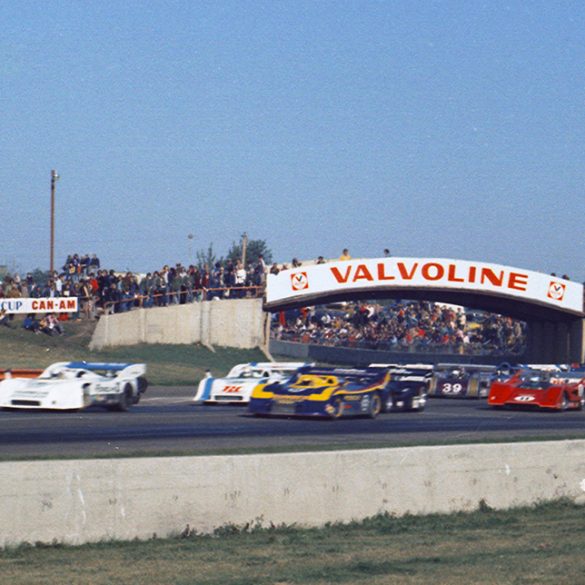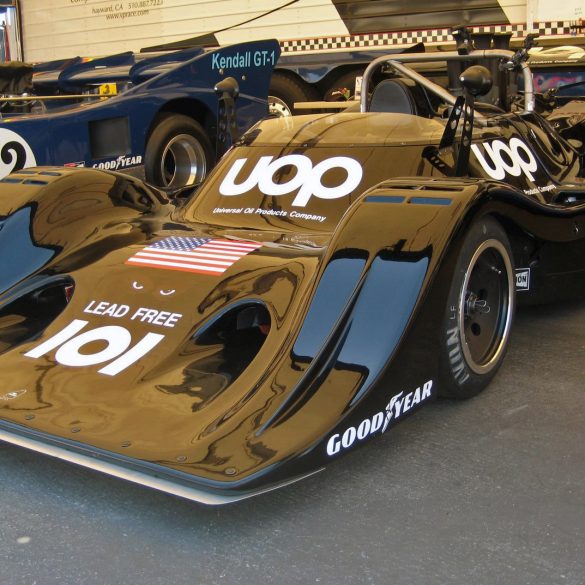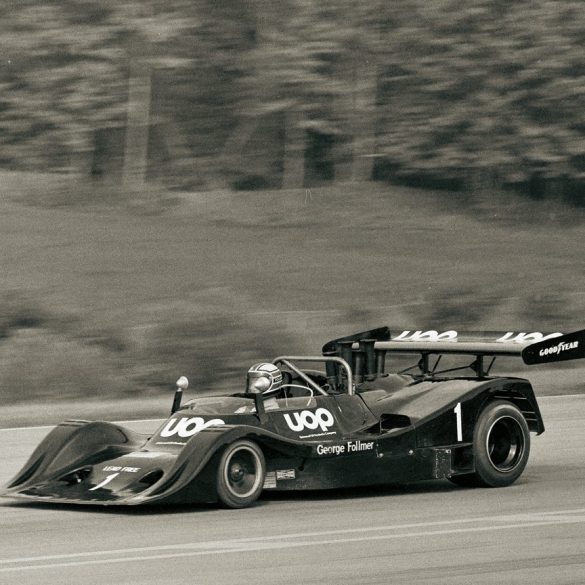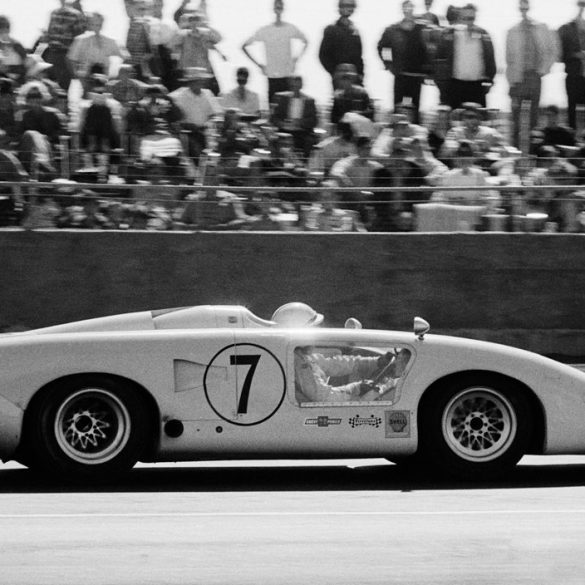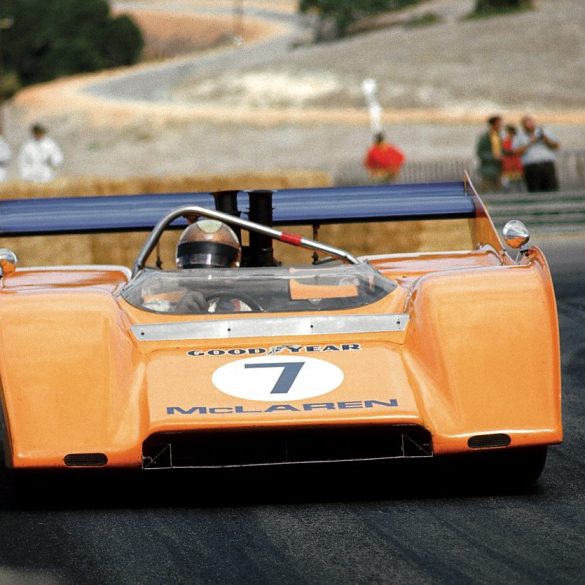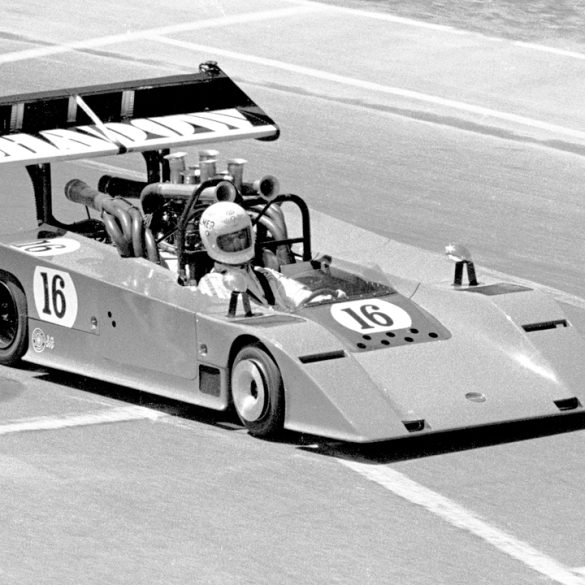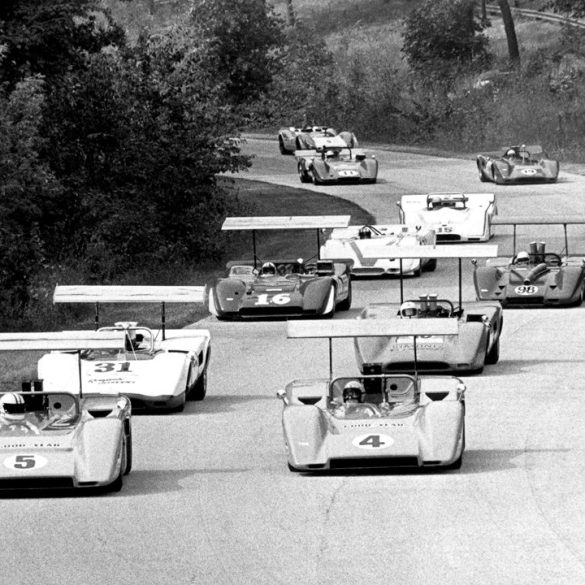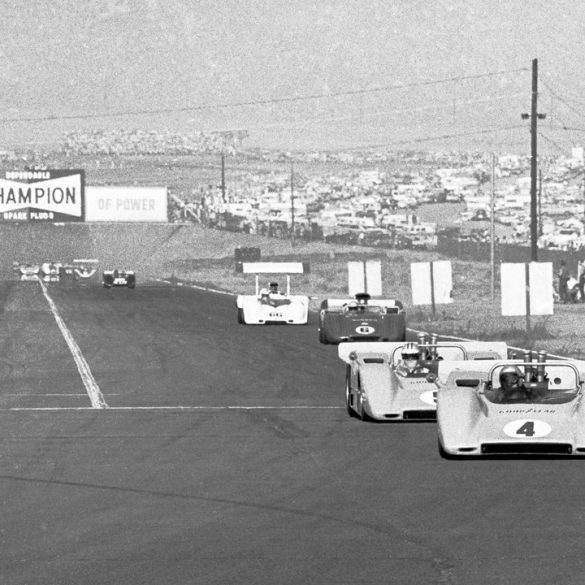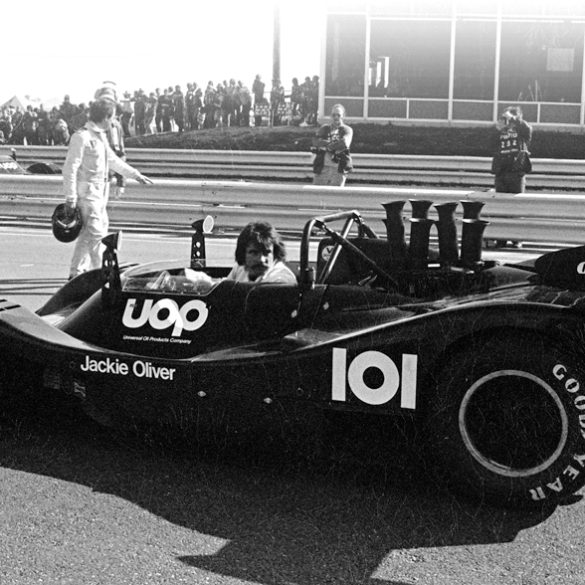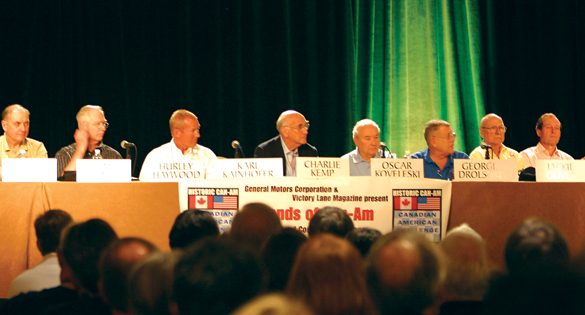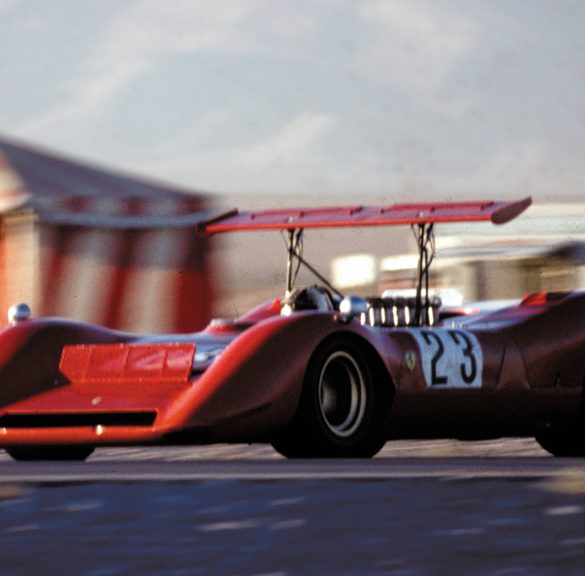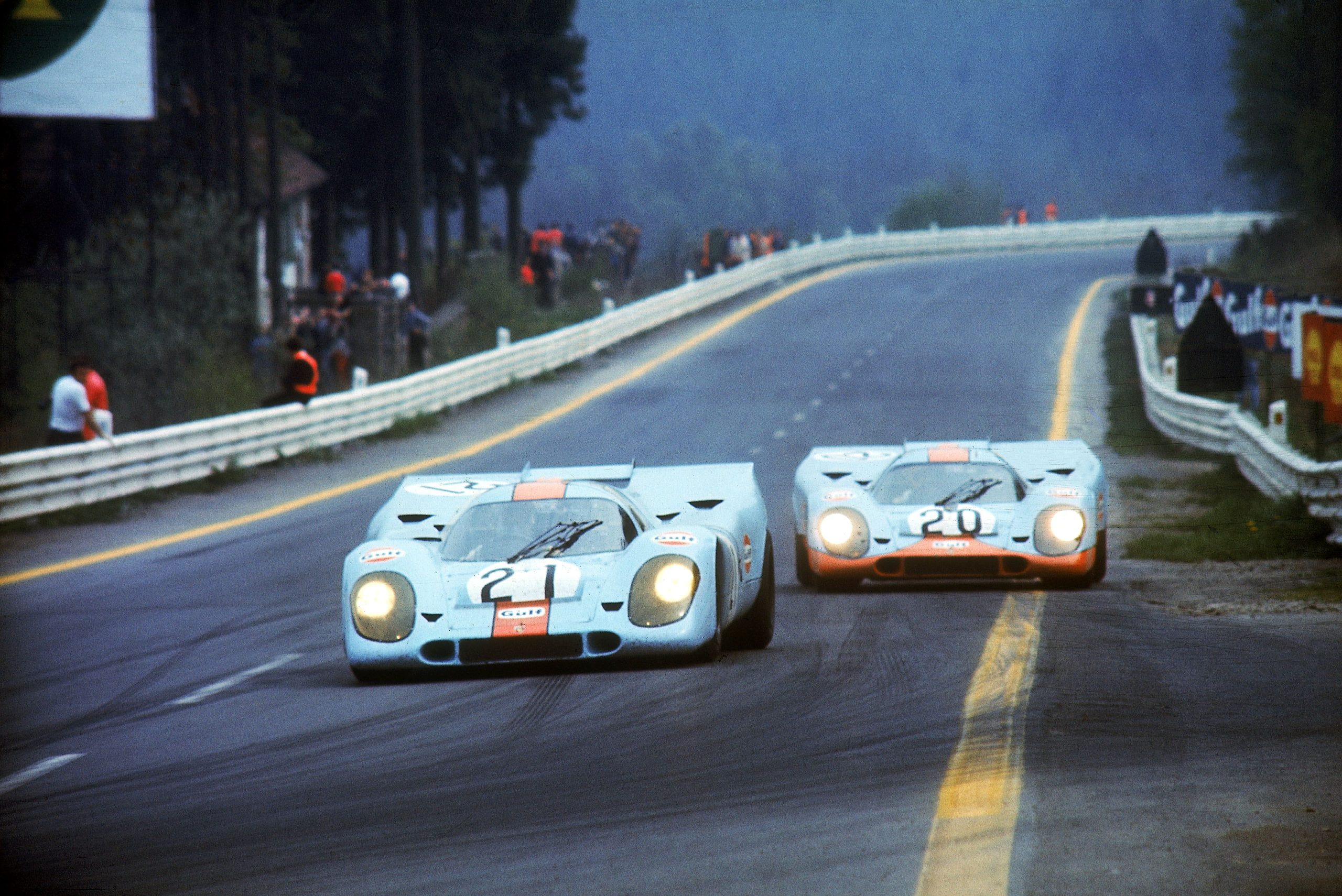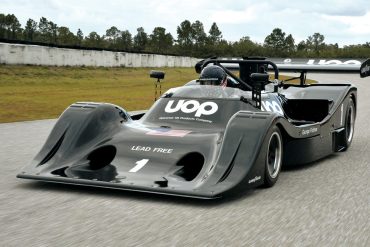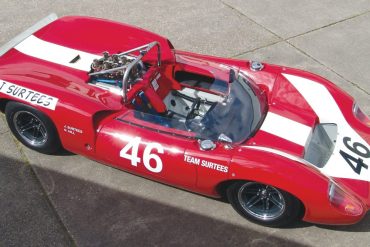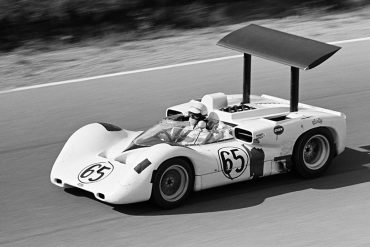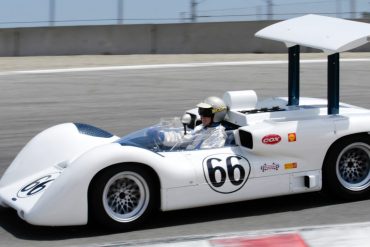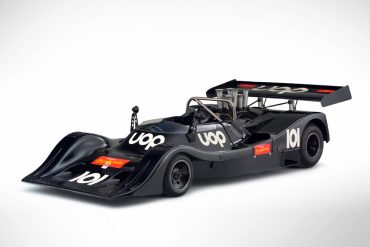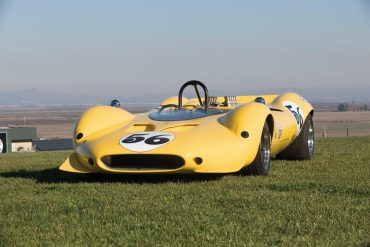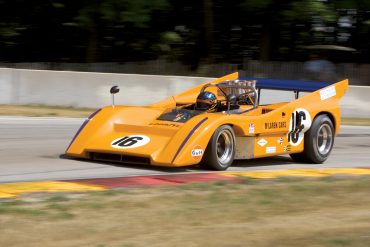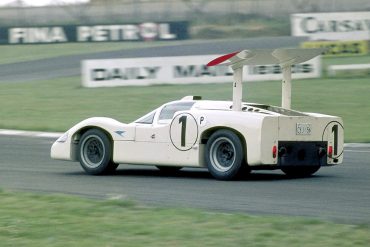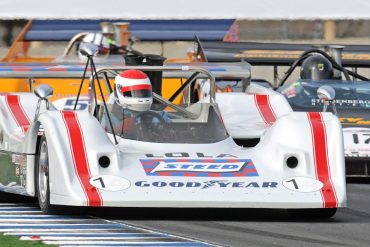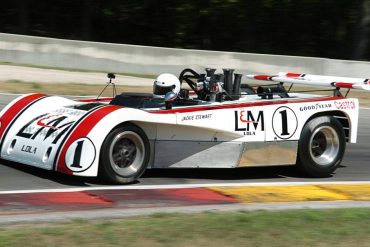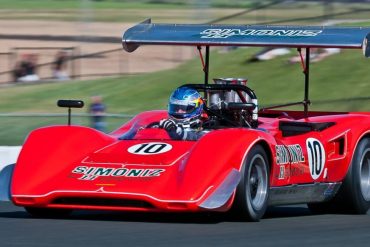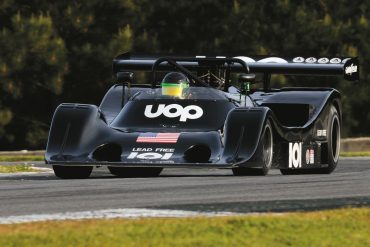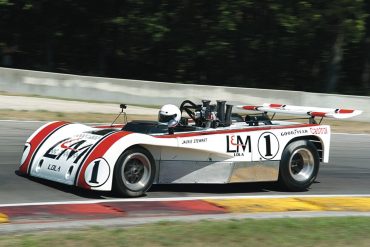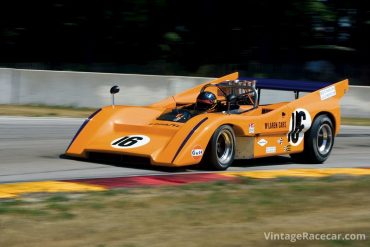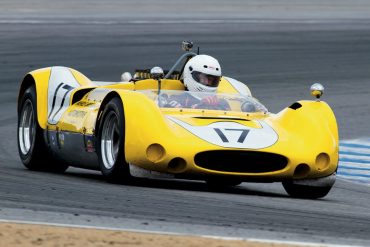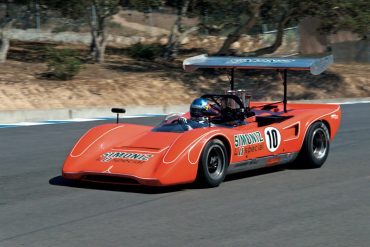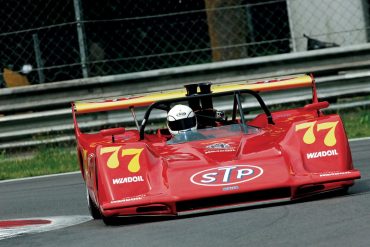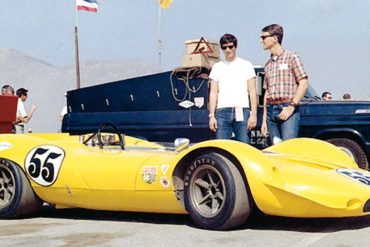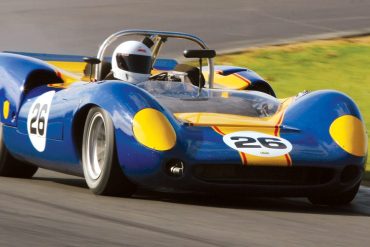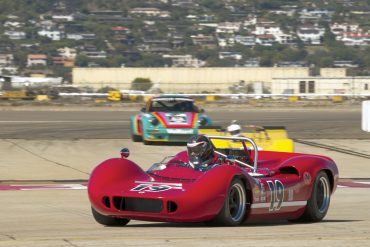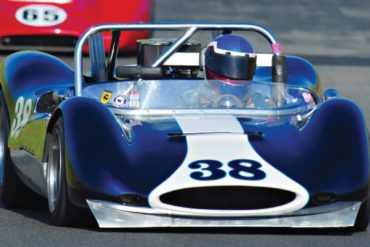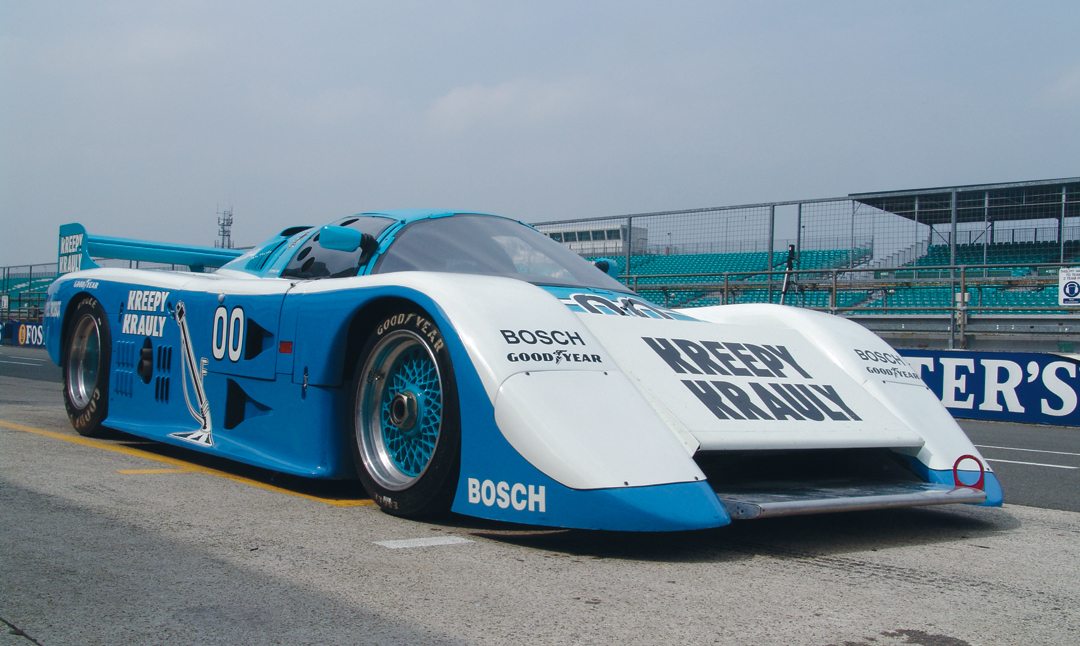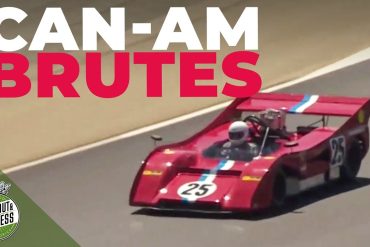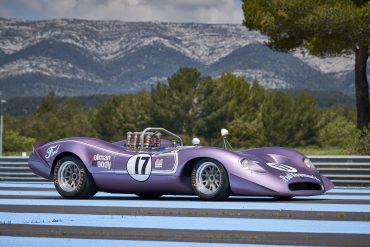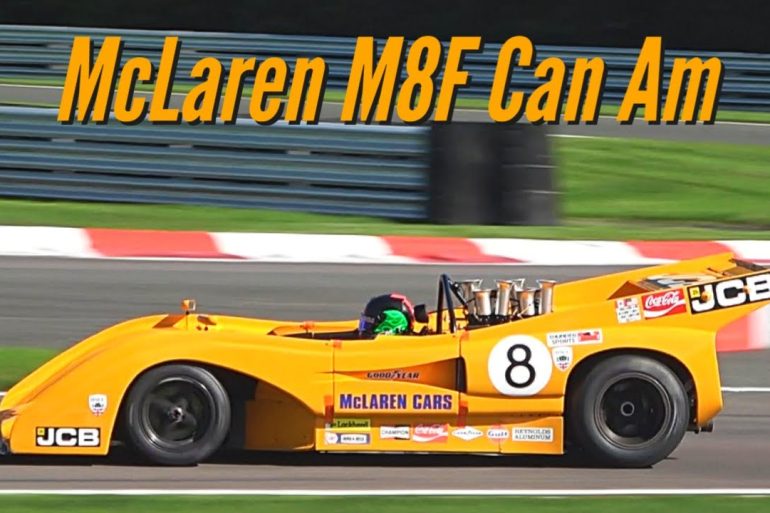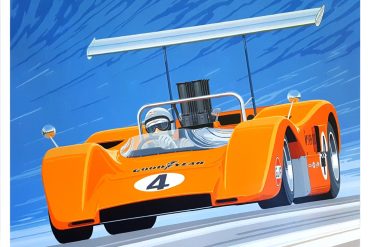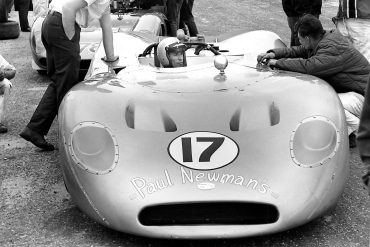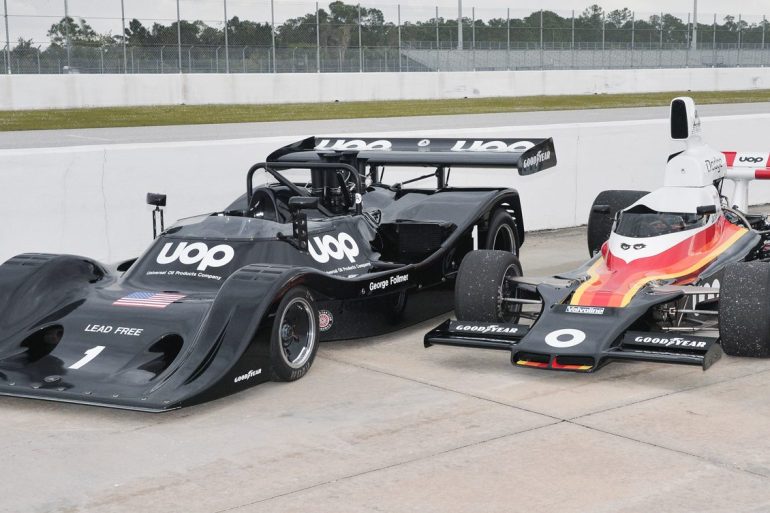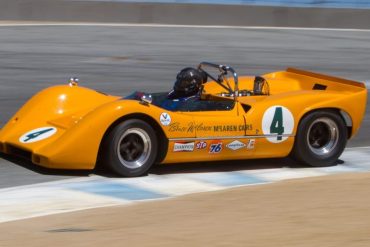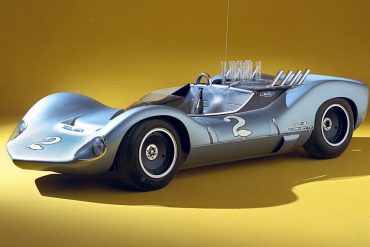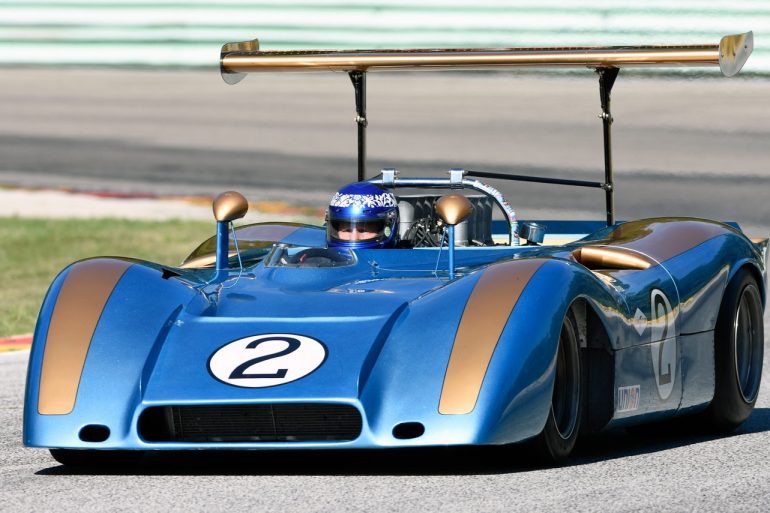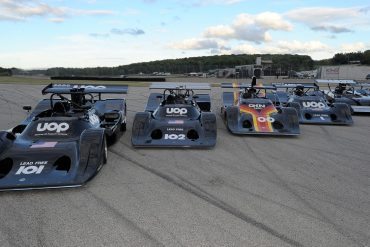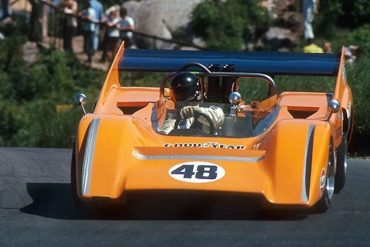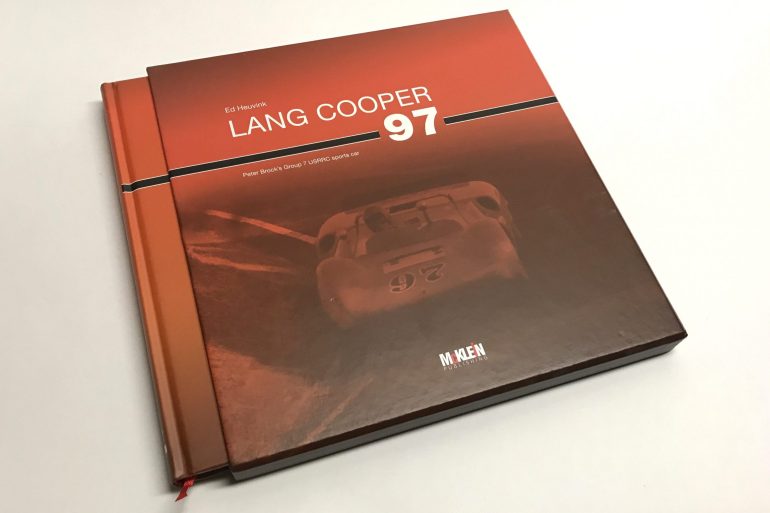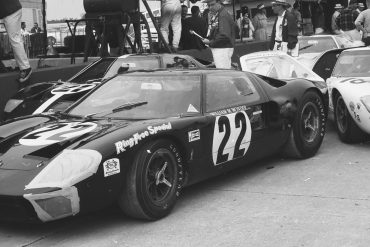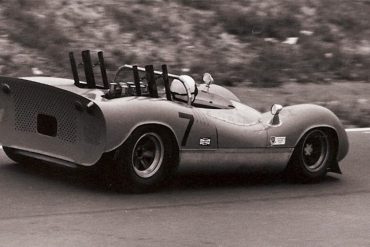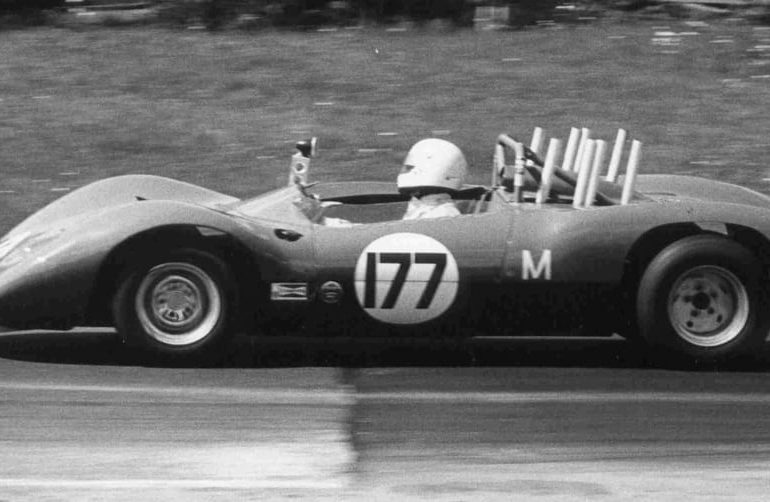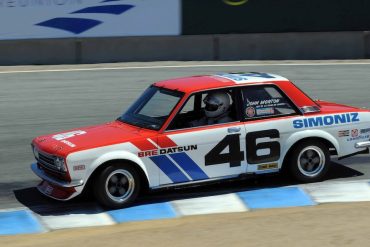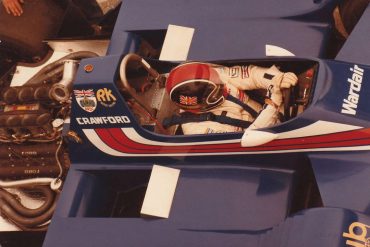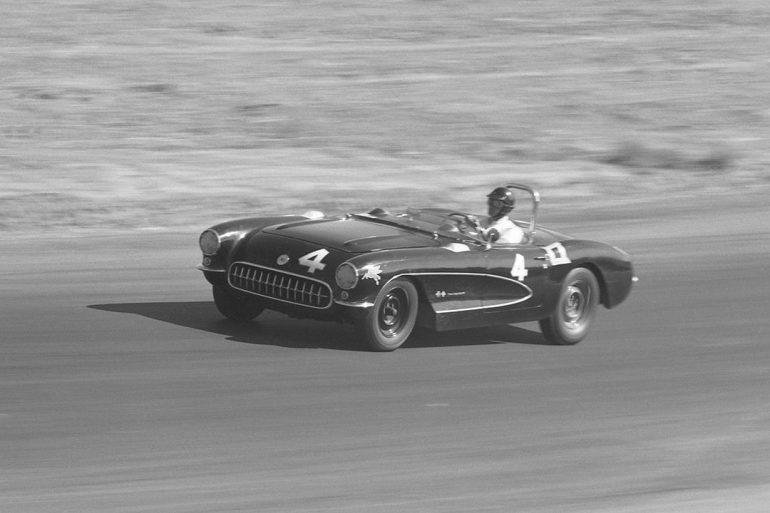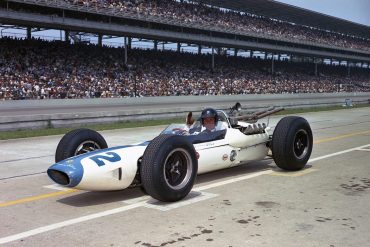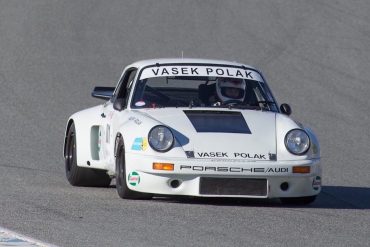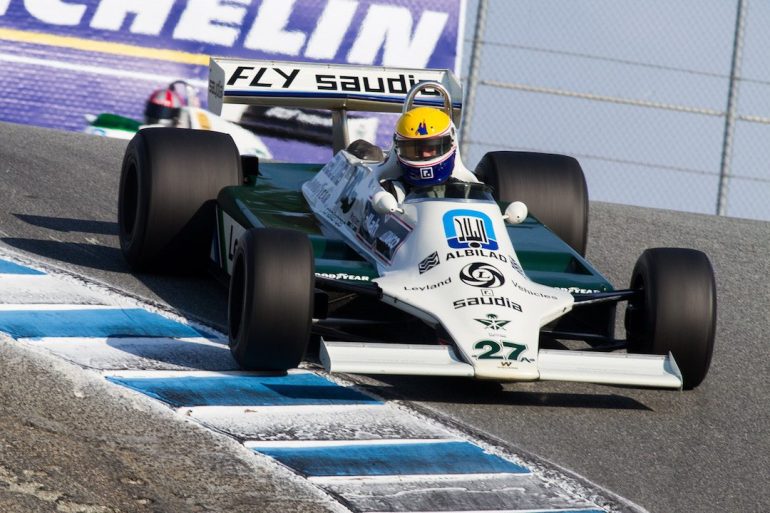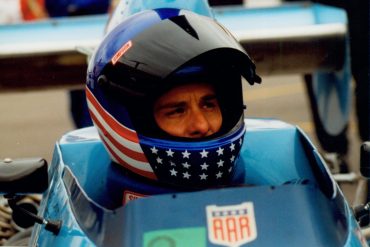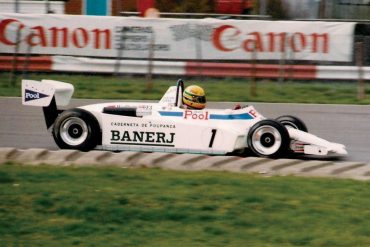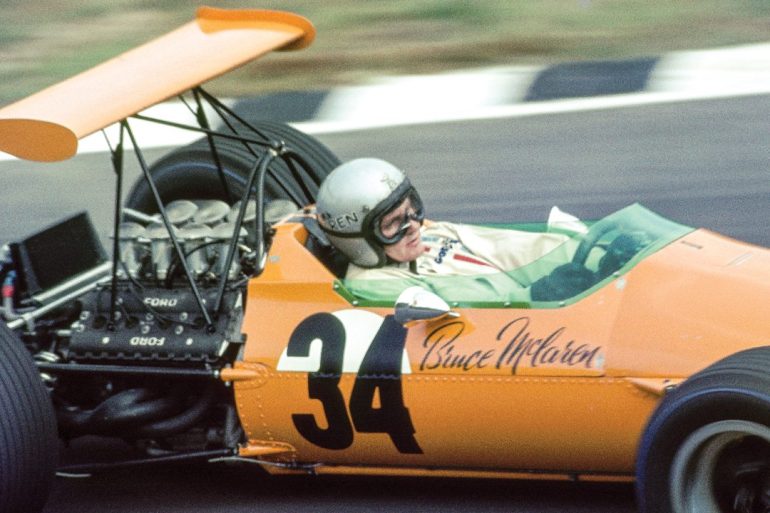When the sports car scene started to heat up again in ’65-’66, I went to work for Motorsport Design in Connecticut, and we built a McLaren M6A for John Cannon. After that I was hooked on the Can-Am so I moved back to California, when I became Peter Revson’s mechanic...
Can-Am Racing
Can-Am featured the fastest, most powerful sports cars running under a minimal-rules regime that allowed the widest scope for innovation. These crazy racing cars were driven by the top road-racing drivers on the planet.
The original Can-Am is regarded as one of the high points of post-war sports car racing. CanAm was short for Canadian-American Challenge Cup, and it was a sports car racing series that ran from 1966 through 1974. It used the FIA Group 7 category with two races occurring in Canada and four races in the United States. Funding was initially provided by J-Wax. CanAm racing was co-sanctioned by the SCCA and the CASC; it was a series nicknamed the “unlimited” series.
The nickname “unlimited” came from the regulations allowing engines of unlimited displacement and number of cylinders, i.e. horsepower. Essentially this was the open sports racing car series and it became a hotbed of new technology and racing car design.
The CanAm series was astonishing and 'wide open.' There were minimal regulations on the aerodynamics, engine sizes, and vehicle mechanics. The main rules were a body that enclosed the wheels, complied with the safety requirements, and had seating for two. In Europe, the Group 7 cars were mostly designed for short distance races rather than the endurance racing. There were no homologating requirements and limited regulations. In North America, the CanAm series was appealing for many reasons.
The prize money was good and the competition and the races were exciting. The cars were faster than the Formula 1 cars of that era. The sport evolved to having cars well over 1000 horsepower with low weight, aerodynamic bodies, and large wings to create necessary down-force. Turbo-charging and supercharging were widely used. The bodies and mechanical components were made of exotic metals such as titanium. The series became a testing ground for many manufactures interested in examining technology without the worries of new or imposing regulations.
It took place from 1966 until 1974 with races in Canada and the United States. At its peak it was a 10-race series, and cars from BRM, Chaparral, Ferrari, Lola, March, McLaren, Porsche and Shadow were driven by drivers such as Amon, Donohue, Follmer, Gurney, Hill, Hulme, McLaren, Oliver, Revson, Scheckter, Siffert, Stewart and Surtees. Although partly known as the “Bruce and Denny Show” because of their five straight years of winning championships racing McLarens, the Can-Am started with a Lola championship and ended with complete domination by Porsche with the 917/10, and 917/30.
[adrotate group ="5"]
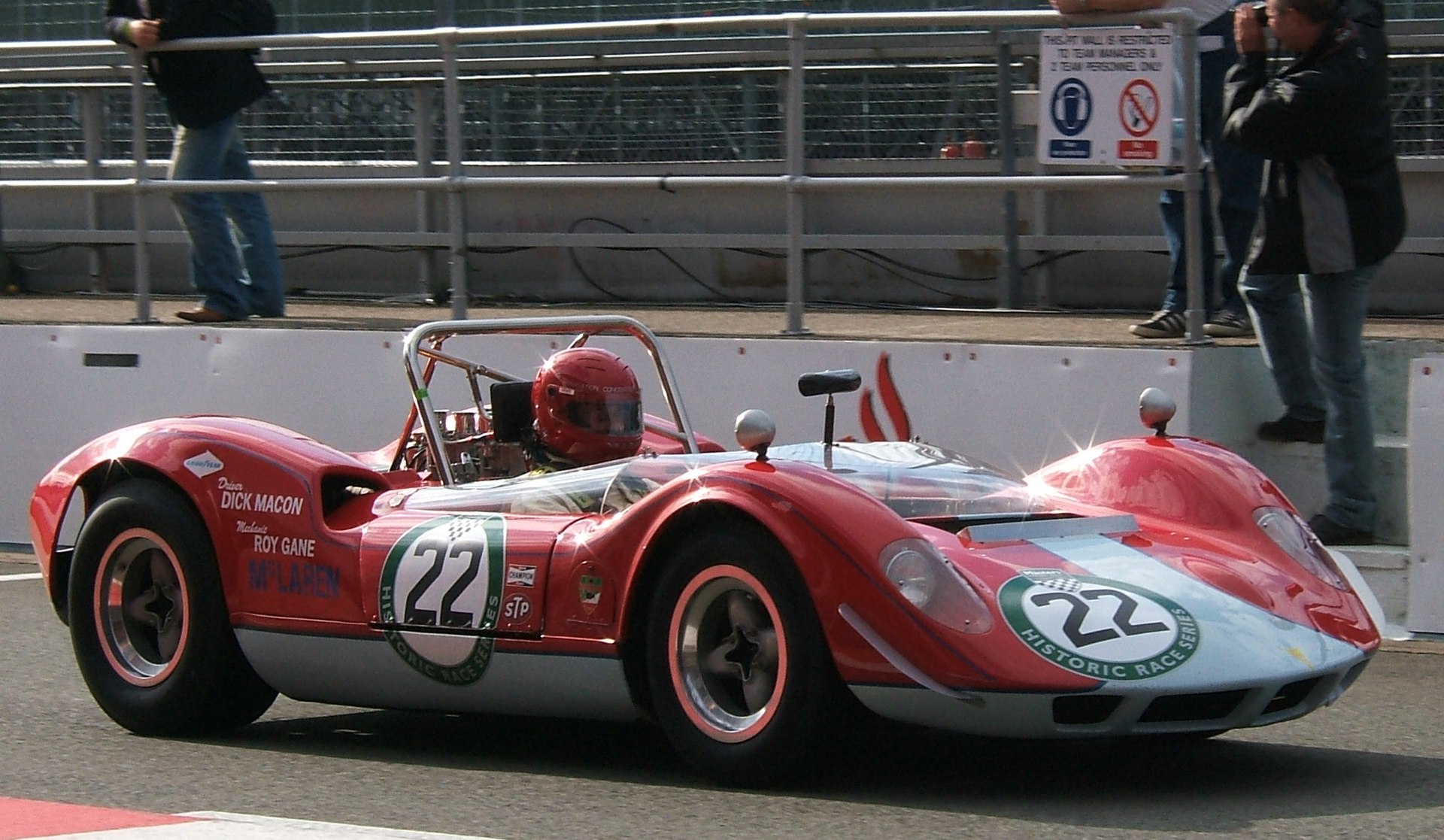
The first Can-Am race was on September 1966 and at the end of that first season it was John Surtees who was crowned the champion after winning three of the races. For 1967, McLaren entered a potent M6A racer which dominated the season with Bruce McLaren easily capturing the championship. The M6A was powered by a small-block Chevy V8 capable of producing over 520 horsepower. McLaren continued their dominance for the next four years. Dennise Hulme won the Championship in 1968 and 1970 with Bruce McLaren securing another championship victory in 1969. By 1968, most of the cars were powered by all-aluminum big-block Chevrolet engines producing over 620 horsepower. Manufacturers from other racing series were lured into CanAm racing due to the prize money. Ferrari even entered the ring with their 612P. With a V12 engine and using engines that were 6.2 and 6.9 liters in capacity, it was very quick but not as perfected as some of the other cars in the circuit. The Porsche 917/10 was similar to other 917's but purposely built for Group 7 of American CanAm racing. It used even more lightweight materials and a larger fuel tank. During its first season of racing, it was not as successful as hoped. The 12-cylinder engine was not powerful enough to compete for first place. So the 917 was fitted with turbochargers. With the turbochargers and 950 horsepower. The Lola T220 provided the most competition for the McLaren team but was unable to secure the championship. While the competition heated up these years, it was still McLaren dominating, with five years in a row of winning the championship.
During the 1972 season Mark Donohue and George Follmer drove the Porsche's in competition. In 1973, Porsche 917/30 was outfitted with twin-turbochargers and a 5.4 liter, 12-cylinder engine. It was capable of produced between 1100 and 1500 horsepower. The 917/30 was only available for Team Penske's driver Mark Donohue and it dominated the Can-Am series with Mark Donohue winning the championship. In 1974 it was banned from racing in the CanAm series because the CanAm series had begun to lose its fan base since there was no competition. Regulations were created that limited the fuel capacity of the vehicles. The Chevrolet powered vehicles were again contenders. Jackie Oliver and George Follmer, driving a Shadow DN4, proved to be the fastest of the season. The other manufacturers were using outdated cars and were unable to keep pace.
1974 was the final year for the CanAm series. The demise of the Can Am Championship series was due to a number of issues. North America was experiencing a recession and an oil crisis. The cost of creating competitive cars had skyrocketed. The general public was losing interest and sponsorship was withdrawing.
In 1977 the SCCA reintroduced a revised Can Am series allowing Formula A/5000 series cars to be entered. The series never gained much popularity had a limited lifespan. The single-seater Formula 5000 series became the leading road-racing series in North America and many of the Can-Am drivers and teams continued to race there. F5000's reign lasted for only two years, with a second generation of Can-Am following. This was a fundamentally different series based initially on converted F5000 cars with closed-wheel bodies. There was also a two-liter class based on Formula Two chassis. The second iteration of Can-Am faded away as IMSA and CART racing became more popular in the early 1980s but remained active until 1987.
Today, there is a historic Can-Am group, which organizes races across the country, including some very popular Can-Am reunion events.
Learn More: Ultimate Can-Am Racing Guide
The greatest racing series in the history of motorsports
Everybody

Can-Am Champions
1966 - John Surtees - Lola T70-Chevrolet
1967 - Bruce McLaren - McLaren M6A-Chevrolet
1968 - Denny Hulme - McLaren M8A-Chevrolet
1969 - Bruce McLaren - McLaren M8B-Chevrolet
1970 - Denny Hulme - McLaren M8D-Chevrolet
1971 - Peter Revson - McLaren M8F-Chevrolet
1972 - George Follmer - Porsche 917/10
1973 - Mark Donohue - Porsche 917/30KL
1974 - Jackie Oliver - Shadow DN4A-Chevrolet
1975 - No Series
1976 - No series
1977 - Patrick Tambay - Lola T333CS-Chevrolet
1978 - Alan Jones - Lola T333CS-Chevrolet
1979 - Jacky Ickx - Lola T333CS-Chevrolet
1980 - Patrick Tambay - Lola T530-Chevrolet
1981 - Geoff Brabham - Lola T530-Chevrolet / VDS 001-Chevrolet
1982 - Al Unser Jr. - Frissbee GR3-Chevrolet
1983 - Jacques Villeneuve Sr. - Frissbee GR3-Chevrolet
1984 - Michael Roe - VDS 002-Chevrolet / VDS 004-Chevrolet
1985 - Rick Miaskiewicz - Frissbee GR3-Chevrolet
1986 - Horst Kroll - Frissbee KR3-Chevrolet
1987 - Bill Tempero - March 85C-Chevrolet
Under 2 L Class Champions
1979 - Tim Evans - Lola T290-Ford
1980 - Gary Gove - Ralt RT2-Hart
1981 - Jim Trueman - Ralt RT2-Hart
1982 - Bertil Roos - Marquey CA82-Hart
1983 - Bertil Roos - Scandia B3-Hart
1984 - Kim Campbell - March 832-BMW
1985 - Lou Sell - March 832-BMW
Can-Am Racing Cars
The Fastest, Most Extreme & Straight Up Crazy Race Cars Ever Made
Caldwell D7
Chaparral 2
Chaparral 2C
Chaparral 2G
Ferrari 712M
March 707
McLaren M1A
McLaren M1B
McLaren M8E
McLaren M8F
Porsche 917PA
Porsche 917/10K
Shadow Mk I
Shadow Mk II
Shadow Mk III
Shadow DN2
Can-Am Racing Drivers
The Best of the Best. These are some notable Can-Am drivers.
Can-Am Races
Season by Season
1977 season
Mont-Tremblant, Laguna Seca, Watkins Glen, Road America, Mid-Ohio, Mosport Park, Trois-Rivières, Sears Point, Riverside
1978 season
Road Atlanta, Charlotte, Mid-Ohio, Mont-Tremblant, Watkins Glen, Road America, Mosport Park, Trois-Rivières, Laguna Seca, Riverside
1979 season
Road Atlanta, Charlotte, Mosport Park, Mid-Ohio, Watkins Glen, Road America, Brainerd, Trois-Rivières, Laguna Seca, Riverside
1980 season
Sears Point, Mid-Ohio, Mosport Park, Watkins Glen, Road America, Brainerd, Trois-Rivières, Road Atlanta, Laguna Seca, Riverside
1981 season
Mosport Park, Mid-Ohio, Watkins Glen, Road America, Edmonton, Trois-Rivières, Mosport Park, Riverside, Laguna Seca, Caesars Palace
1982 season
Road Atlanta, Mosport Park, Mid-Ohio, Road America, Trois-Rivières, Mosport Park, Caesars Palace, Riverside, Laguna Seca
1983 season
Mosport Park, Lime Rock, Road America, Trois-Rivières, Mosport Park, Sears Point
1984 season
Mosport Park, Dallas (Fair Park), Brainerd, Lime Rock, Road Atlanta, Trois-Rivières, Mosport Park, Sears Point, Riverside, Green Valley Raceway
1985 season
Mosport Park, Lime Rock, Lime Rock, Mosport Park, St Louis International Raceway, St Petersburg
1986 season
Mosport Park, Summit Point, St Louis International Raceway, Mosport Park
[adrotate group ="5"]
Can-Am Racing Cars - The Market & Values
These are some of the rarest and most extreme cars ever made, so it is no surprise that the values of these machines has grown over the years. Our annual analysis shows just how far the Can-Am racing car market has come.
Can-Am Racing News & Historic Racing
While the Can-Am series may have been discontinued more than 30 years ago, fans remember it fondly. Below we take you through some of the auction results of cars for sale as well as coverage from all the Historic Can-Am events globally each year.


